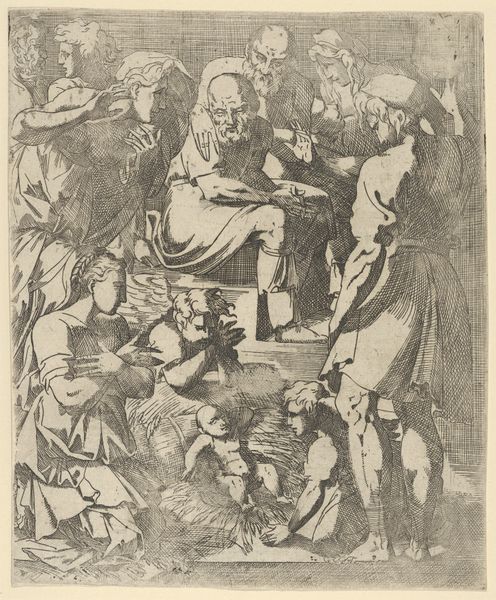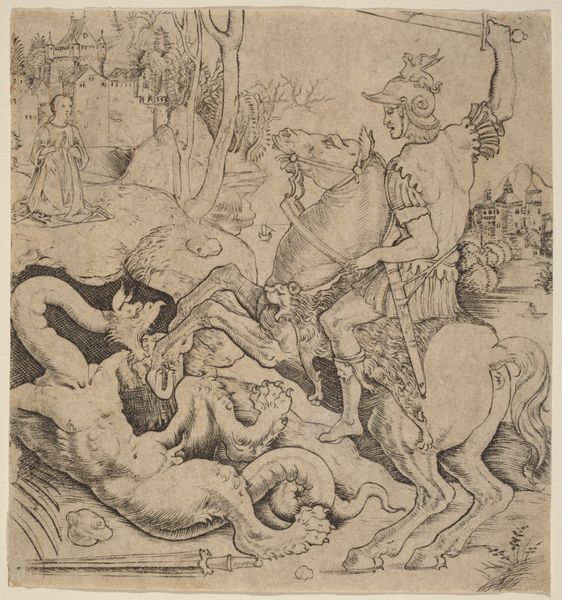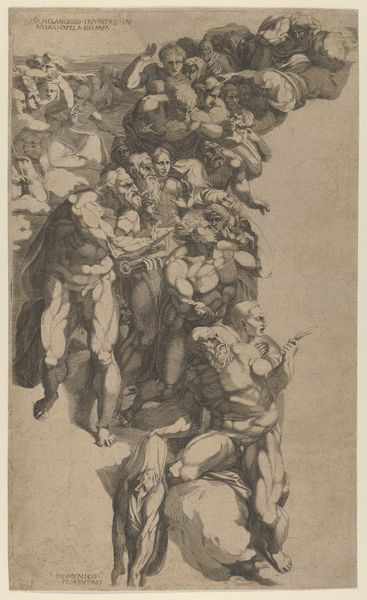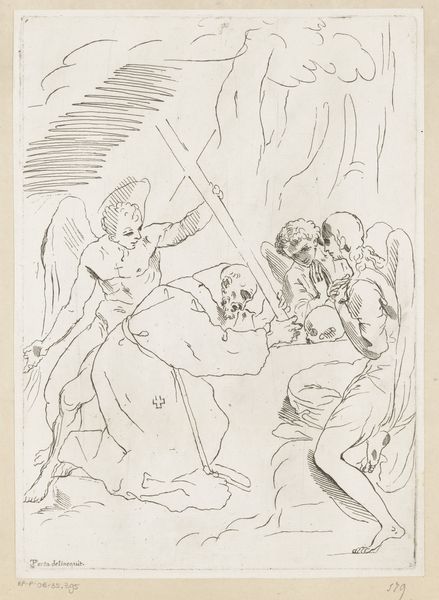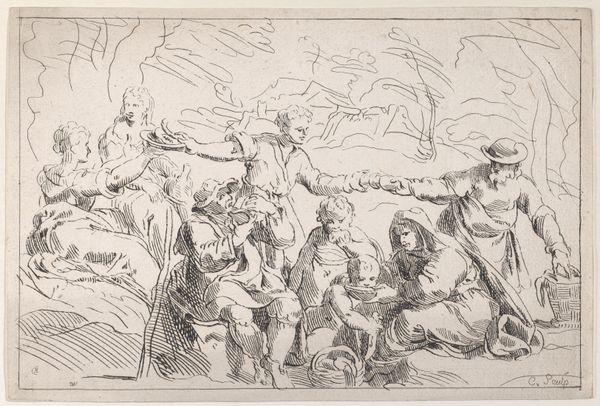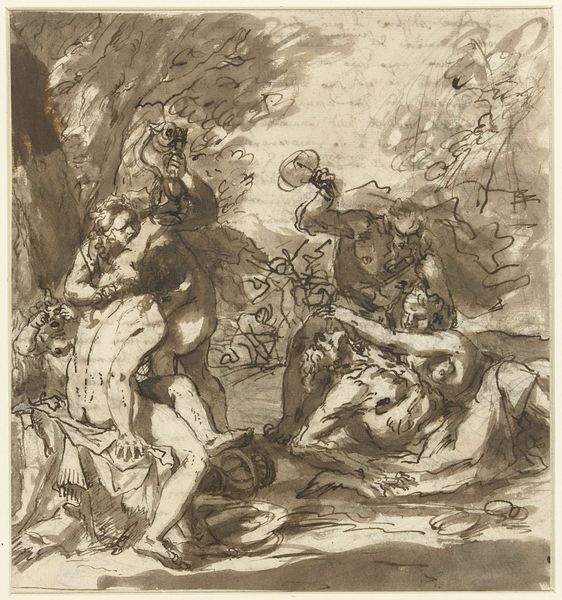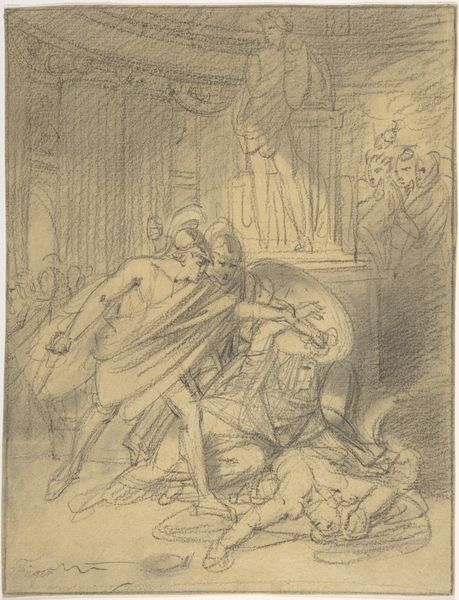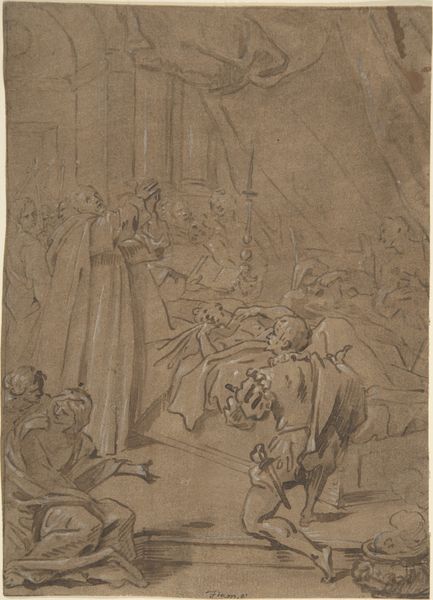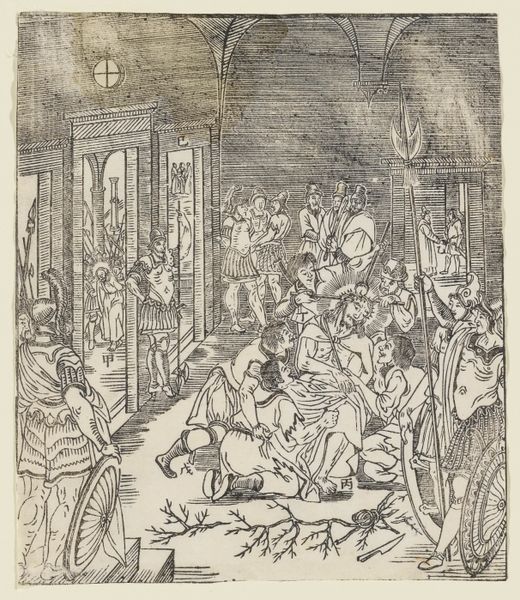
Dimensions: sheet (trimmed within plate mark): 20.8 × 15.8 cm (8 3/16 × 6 1/4 in.)
Copyright: National Gallery of Art: CC0 1.0
Editor: This is Gaetano Gandolfi's "Adoration of the Shepherds," a drawing in ink on paper from around the 1780s. It feels quite intimate, like a quick sketch capturing a deeply moving scene. What draws your eye when you look at this, what stands out for you? Curator: I'm immediately struck by the layers of symbolism embedded in this seemingly simple scene. Gandolfi, working in the Baroque style, draws upon centuries of artistic and religious iconography. Look at the dramatic chiaroscuro, the strong contrasts of light and shadow. It's not just aesthetic; it's symbolic, representing the divine light entering the dark world through the birth of Christ. Editor: I see what you mean. The light really does seem to emanate from the baby Jesus. Curator: Precisely! And consider the shepherds themselves. In art, they often represent humility and the common man, the first to be called to witness this sacred event. What about the putti floating above? Editor: Angels, of course! Are they heralding the good news? Curator: Yes, but also consider the psychological impact. Gandolfi isn't just depicting a biblical story; he's tapping into the deep-seated human desire for connection with the divine, creating a sense of awe and wonder in the viewer. Notice how the lines are not hard-edged but very delicate and evocative. Editor: That makes me think about how even with a traditional subject, Gandolfi manages to create a work that feels very personal. Curator: Exactly! The cultural memory, this inherited story, meets Gandolfi’s personal expression, allowing us to connect with it on a very human level, centuries later. Editor: I hadn’t considered the shepherd as symbolizing "the common man" before - it adds so much more to my understanding. Curator: Visual symbols often work that way: echoing throughout the history of art.
Comments
No comments
Be the first to comment and join the conversation on the ultimate creative platform.
